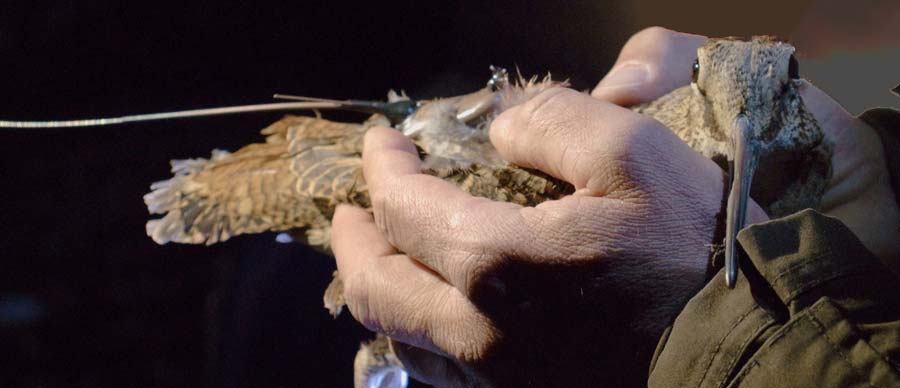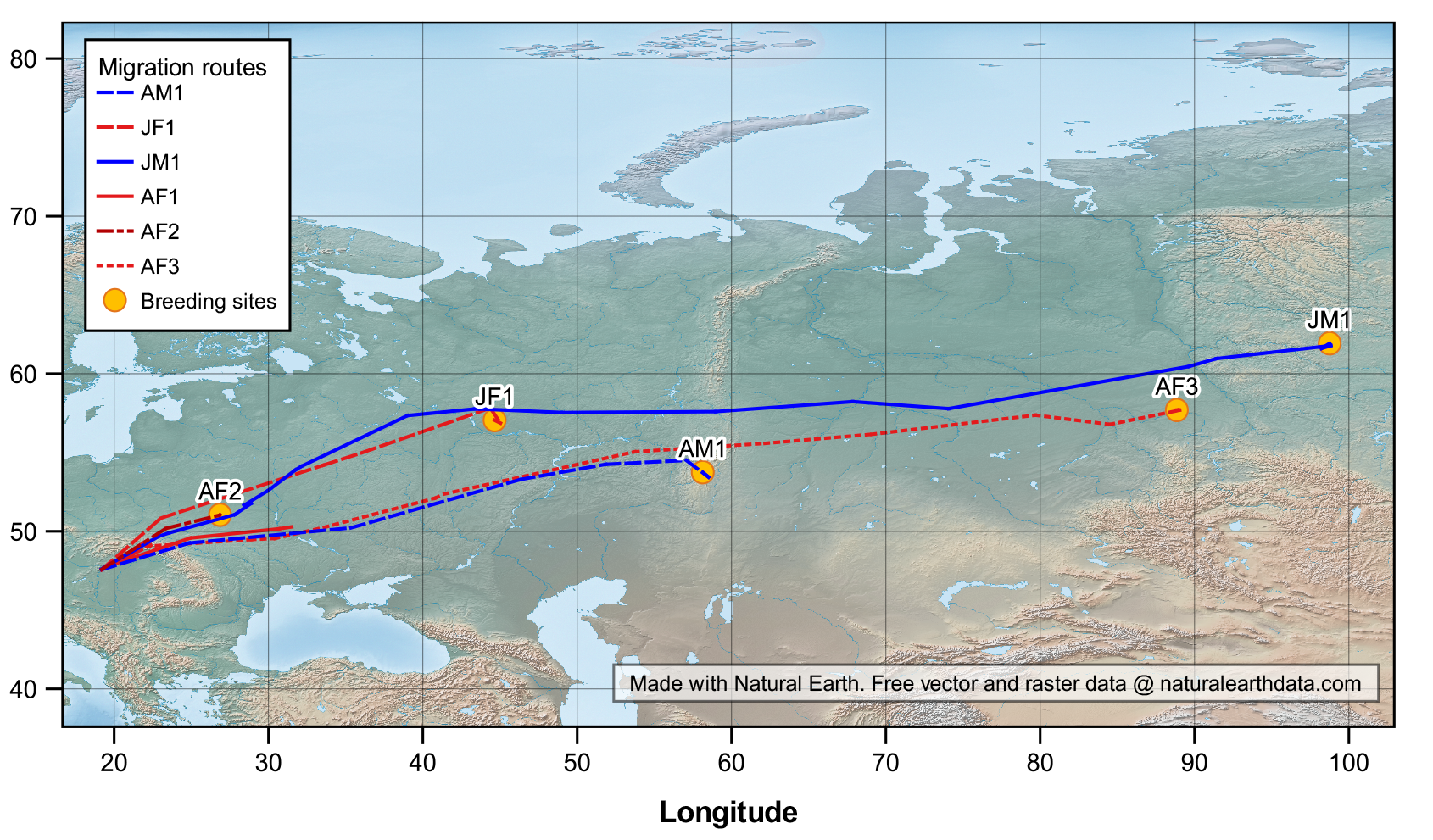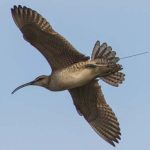← Back
Eurasian Wookcocks’ migrations to breeding sites

Eurasian Woodcocks are birds which migrate across Europe. Their studies have long been led using rings, but the advent of small-enough satellite telemetry emitters now enables to follow them all along their migrations, from wintering to breeding sites, and to know more about the latter, in particular.
Eurasian Woodcocks (Scolopax rusticola) migrations have long been studied using rings. When satellite telemetry became possible to use for such quite small animals, the studies enabled to understand not only their starting and ending points, but also the full migration path, including stopovers and durations (see Scolopax rusticola without frontiers or American woodcock are tracked using Argos satellite telemetry for their American cousins). However, most information was on the wintering sites, while few existed on breeding sites, a period when the woodcocks are not usually hunted, contrary to the wintering one, and thus ring recoveries are lower.
Tracking Eurasian woodcocks for breeding sites
Six Eurasian woodcocks were tagged between 24th February and 18th March 2020 with GPS-Argos transmitters in Central Hungary. The transmitters were programmed to record a GPS location, a few minutes after midnight, assuming that the birds would be feeding in open fields at that hour (thus clearing the data link with the satellites). The distribution of distances between the localizations of consecutive days was analysed to classify the points into “stopover” and “migrating” categories.
More info about animal tracking with Argos
All the birds except for one stayed for two to four weeks within 4 km of the tagging place. Then the woodcocks migrated from Hungary to Ukraine, European Russia and Central Siberia, travelling on average about 2500 km (from less than 700 km to just over 5000 km) at a speed of 382 km/day. The absolute maximum distance covered in a day is recorded at 866 km during this study.
Large individual differences were recorded between the tracked birds. Some travelled the distance nearly in one single flight, while others made several stopovers. One individual even went back for a few days to the tagging area. The starting and arrival dates were not correlated. The latest bird to leave wintering ground was a female (13th April) that reached its breeding site only nine days than the male that left the tagging site at the earliest (21st March).

Migration routes towards breeding areas of Woodcocks deployed with Argos-GPS transmitters in Hungary (from [Schally et al., 2022])
Analysis
Five individuals completed their migration to breeding sites. They were located between 51.0–61.9°N and 26.8–98.7°E, typically in habitats with high forest cover, like more than 60% of the stopovers locations at night. In the case of stopovers, though, nearly 40% of nightly locations were in open agricultural fields or grasslands. The tracked woodcocks always used closed-canopy, forested or bushy areas during daytime. The habitat change between day and night is a specific behaviour of the species.
The Carpathian Basin seems to have a special importance since tagged birds stopovers in the areas were longer. The individuals tagged in the same areas migrated to very distant points, thus showing the low migratory connectivity of woodcock populations.
A better knowledge of the Eurasian woodcock migrations is necessary to better protect the species at all stages of its lifecycle.
Acknowledgement
The project was supported by the Hungarian Hunters’ National Association and the Hungarian Ministry of Agriculture.
References
- Schally, Gergely & Csányi, Sándor & Palatitz, Peter. (2022). Spring migration phenology of Eurasian Woodcocks tagged with GPS-Argos transmitters in Central Europe. Ornis Fennica. 99. 104-116. 10.51812/of.121933. http://dx.doi.org/10.51812/of.121933
- Schally, P. Palatitz, S. Csányi, 2021: Examples of individual wintering strategies of Eurasian Woodcocks (Scolopax rusticola) in Central Europe, poster for the Conference: 35th Congress of the International Union of Game Biologists, September 2021, http://dx.doi.org/10.13140/RG.2.2.32513.53608
Main Photo: an Eurasian woodcock with an Argos PTT (credit: Gergely Schally)

